You might be familiar with the concept of "breaking fully in order to rebuild fully".
The phrase highlights the notion that sometimes, even at our lowest times, the opportunity to start again from scratch may allow us to reach higher ground or new levels of success. In the same way, sometimes beautiful things can come from the ugliest materials or, dare I say, decomposing materials. This prologue is really just a segue into a much simpler concept that follows the same framework…
Allow me to introduce you to composting!
Composting has been around for hundreds of years; originally, it was discovered when civilization began to move towards a more pastoral lifestyle, where people began to grow their food and tend to livestock. The people of the time quickly realized that when manure was added to the soil used to grow crops, the yield was better as it acted as fertilizer for the soil. This eventually led to the intentional use of manure when growing crops and has since become a consistent practice in the farming industry. It is safe to assume that most of us do not grow chickens or cattle in our backyards, so manure may be hard to come by. Instead, you can try creating your very own compost at home!
Composting is the natural process of the breakdown of organic materials with the help of tiny organisms found in soil, ultimately creating a product that releases nutrients slowly, therefore enhancing the soil's biochemical and physical characteristics as well as its nutrient status.
5 steps to a simple backyard compost:
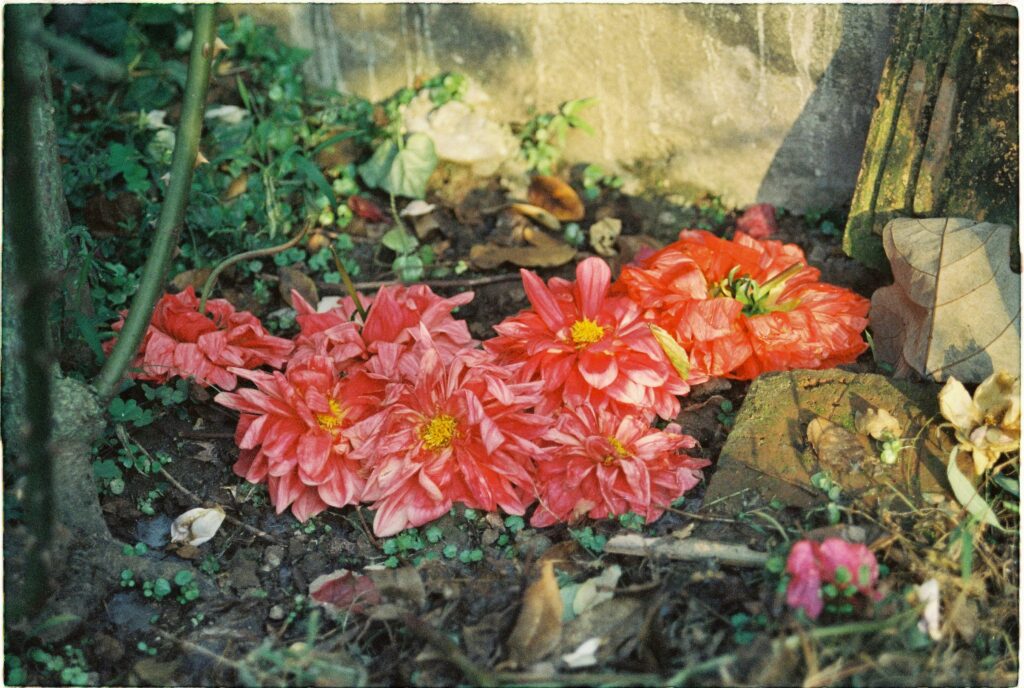
Note:
Composting is a great way to reduce household food waste and ultimately reduce greenhouse gas emissions contributing to climate change. Composting is a fun, simple, and easy way to reduce household food waste. It can be your way of doing your part to make our world healthier and happier for generations to come.
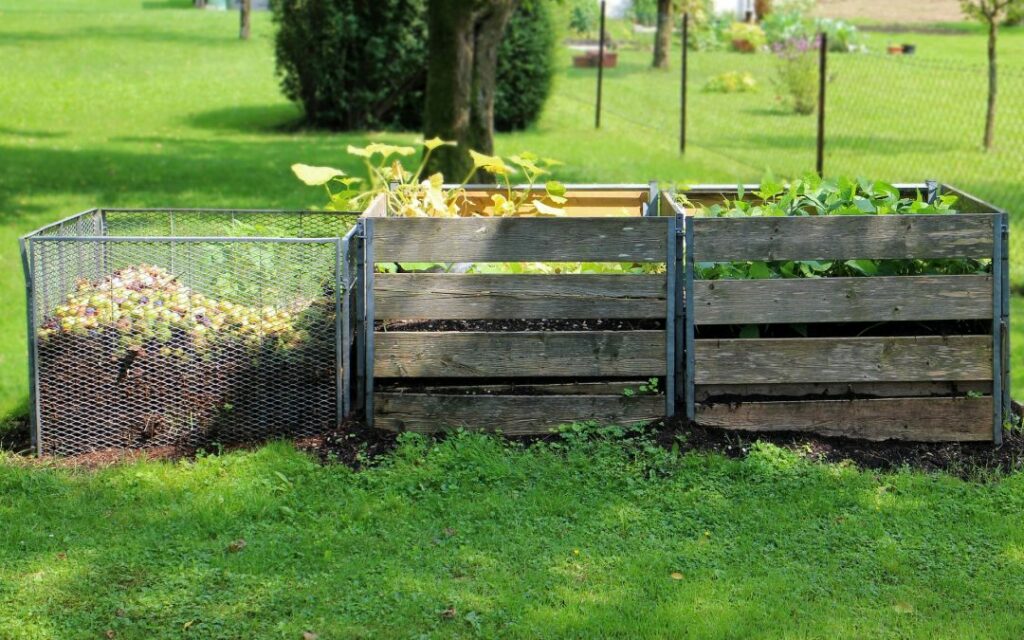
Written by Mabel Varughese
Mabel is a a third-year Nutrition and Food Student at Toronto Metropolitan University. Her journey has been fuelled by a deep love for exploring diverse cuisines, cultures, and traditions. She loves connecting with people from different walks of life and learning about different ways of living. With aspirations to become a Registered Dietitian post-undergrad, Mabel is committed to blending her passion for sustainable practices with her love for food. Together, Mabel aims to foster a healthier planet by encouraging others to embrace nutritious and environmentally friendly eating habits that nourish both the body and the planet!
Ashley, our Project Manager & Volunteer Coordinator, is a mastermind at sourcing things in a sustainable manner and making use of the fresh ingredients available in each season. She started with Green Iglu as a Greenhouse Technician, so also knows all the ins and outs of gardening. We asked Ashley to share her top tips, and here is what she had to say…
My most important tips come from years of trial and error (still in progress!) with continued advice from my dad, aunties, and growing up in my grandmother's garden. From the added benefits of nutrient-dense compost to the hard work and exercise that goes into maintaining a growing space; I have tremendous passion for growing locally and believe growing food or eating local produce is core to longevity.
It was easy for me to discover a passion for pursuing a degree in biology, focusing on plant biology. I am always learning from my gardens and others – I would love to hear your tips and tricks too!
Without further ado, here are my tips to level up your garden:
Seed packages provide this information- but if you are estimating the space required, overestimate rather than under. Remember, most plants will grow larger than expected. This leads to the drowning out the smaller plants (such as herbs)- stunting those smaller plants' growth surrounding larger plants. That being said, larger plants are great for providing shade within a reasonable distance. Large plant examples: Squashes, tomatoes, kale, melons.
Planting herbs and companion flowers in between vegetables reduces predatory insects.The more flowers you plant the less likely your vegetables will be eaten by beetles, moths, or slugs. Every year I plant an abundance of marigolds and nasturtiums.
Other alternatives, I place a shallow tray of beer in my garden near squashes, cucumbers, and other vegetables that will hang low onto the soil.
I often monitor all my vegetable plants to be sure they are not hanging into the soil- as this causes yellowing and rotting.
Wood ash is also an effective method to eliminate unwanted slugs in the garden.
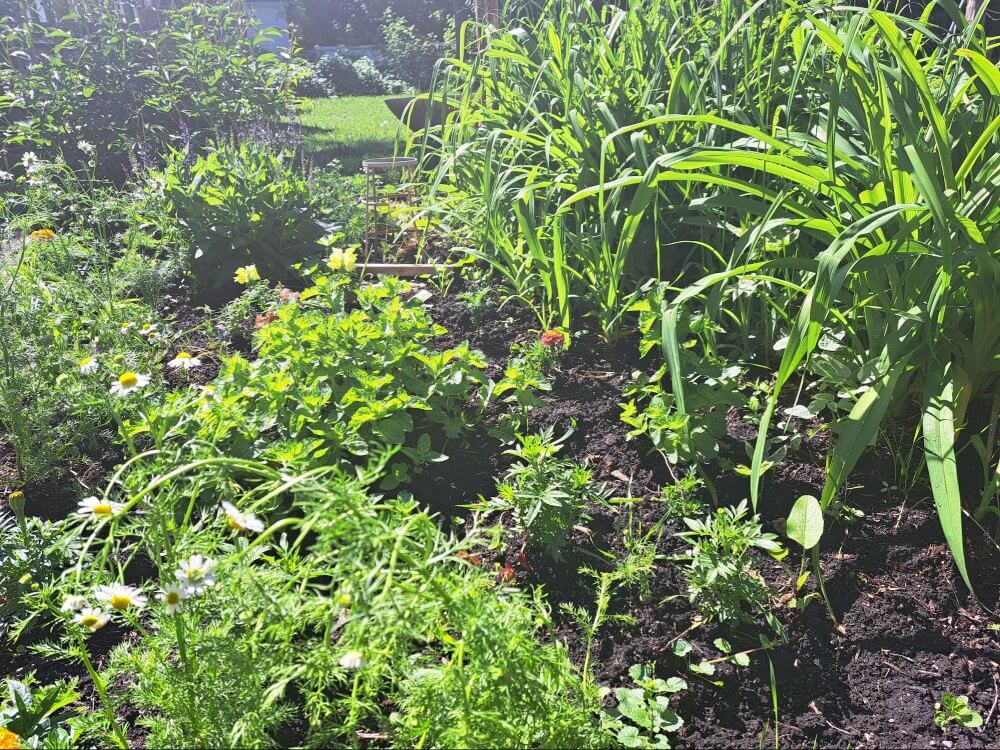
Calcium is important for plant wall formation and structural strength. For extra nutrients, save your eggshells. If you have access to a grinder, even better. Many experienced gardeners swear by this.
Composting is the easiest way to eliminate excess use of garbage bags going into the landfill. I throw everything from coffee grounds, vegetable peels, fruit pits, leaves, broken down branches, and grass clippings.
Plant material is composed of carbon and water. Composting is a great way to return carbon back into the soil for healthier plant growth. The soil will look great too!
Tomatoes can easily turn into a jungle-like mess. Stake your tomatoes with either tomato roll tape or pantyhose early on. Keep guiding your tomatoes as they grow to keep them from bending over and stretching downward toward the ground.
If you have too many tomatoes (which often occurs) can be frozen whole in ziplock bags and used for soups all winter.
Of course, water is essential for plants to grow; it is equally important not to overwater. Overwatering can lead to the death of the fruit, a good example, zucchinis are prone to stunted fruit development by turning yellow and will fall off if overwatered.
Feel the soil often. If your plants are slowing down in growth and the soil is dry, then you are underwatering.
I love to grow extra herbs to store over the winter-dill, oregano, and thyme. I cut them throughout the summer and hang them to dry. I usually have enough right until the following spring.
Always grow what you love or consume the most first. Growing a variety of fruits and vegetables is part of the fun when trying new recipes and new things to pickle for overwintering.
I am inspired by many cultures to try new produce to grow. For example, tomatillos are great for making green salsa, pickling fennel or daikon radish for winter salads, and okra for jambalaya rice or soups.
My tip for trying new vegetables is to plant what you love to eat and add in a new vegetable or two each year.
Invest in adding one or two new plants that will return next year. Try planting berry bushes, grapes (great for adding shade to your greenhouse), or native plants from your region.
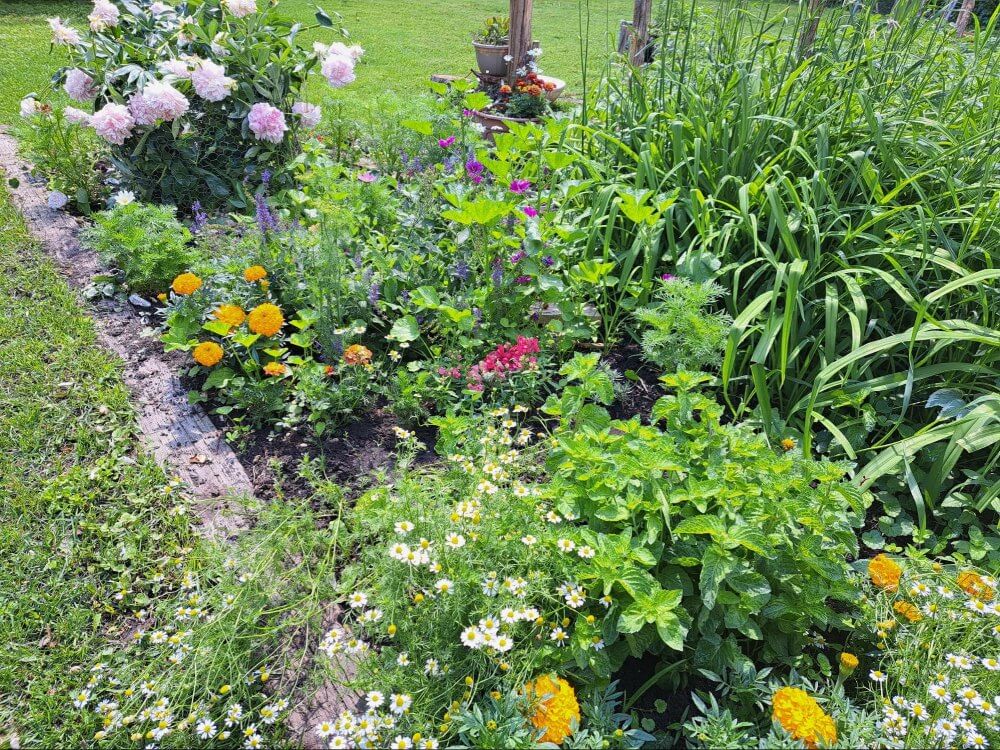
Be sure to pay attention to harvest dates on your seed package. It can be helpful to add this date on the label that marks your plant name. Nothing is worse than your efforts going to waste because of a late harvest. Late harvesting can lead to bitter/hard vegetables or an invasion of insects eating your crops.
Lastly, the best part of growing and harvesting is sharing and exchanging with neighbors, friends and family!
Thanks for taking the time to learn with us today and for giving our team the opportunity to support you in your growing journey!
You can reach Ashley directly at ashley@greeniglu.com, and can always contact the team at info@greeniglu.com. Let us know if you make use of any of the tips above. We would love to hear from you about your experience!
As a very curious outdoor enthusiast who has yet to have a backyard and garden of my own, I recently went to the Greenhouse Technicians curious to hear their best gardening tips. These are the folks at Green Iglu who help you set up your greenhouse and start growing.
It turns out our team is full of passionate gardeners… who would have thought?! I ended up knocking on the doors of my team members’ virtual offices and this is what I discovered.
Tips from Korina, Project Manager at Green Iglu:
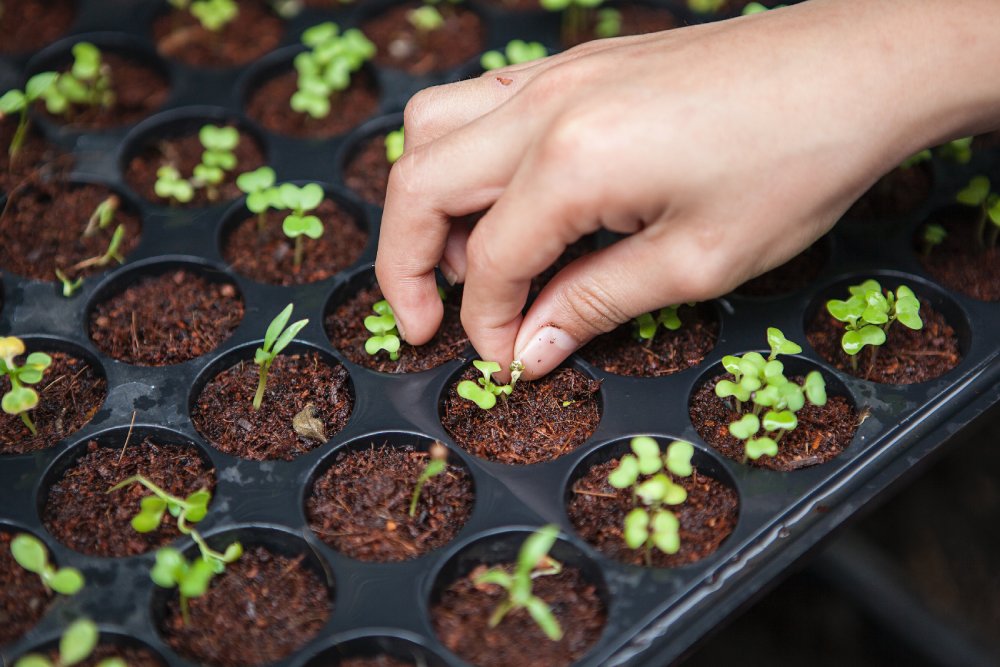
Tips from Tara, Operations Manager at Green Iglu:
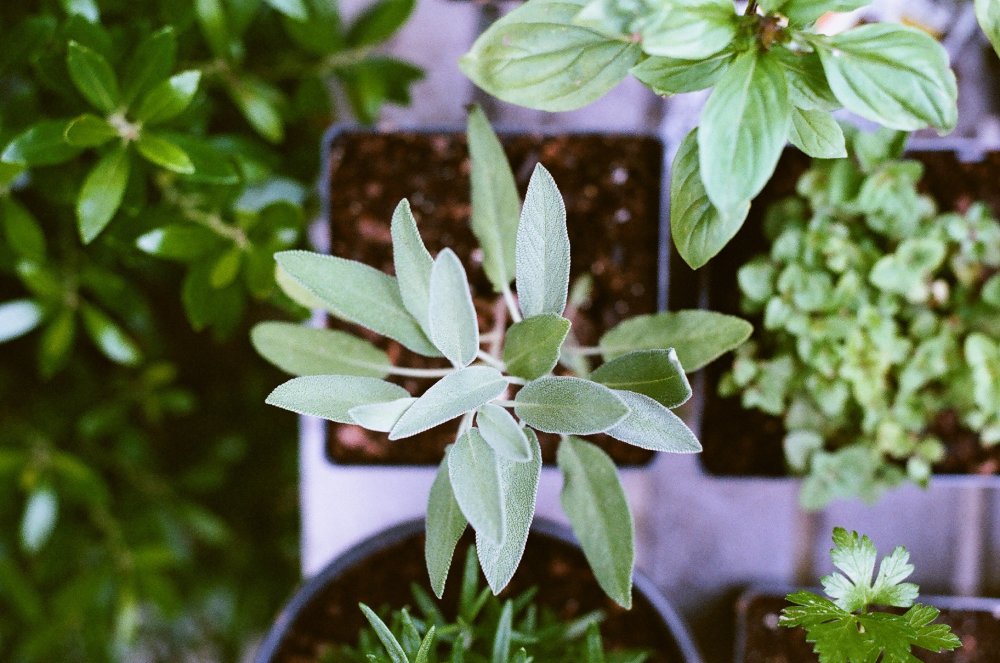
Tips from Rosie, Research Assistant and Enterprise Community Technician at Green Iglu:
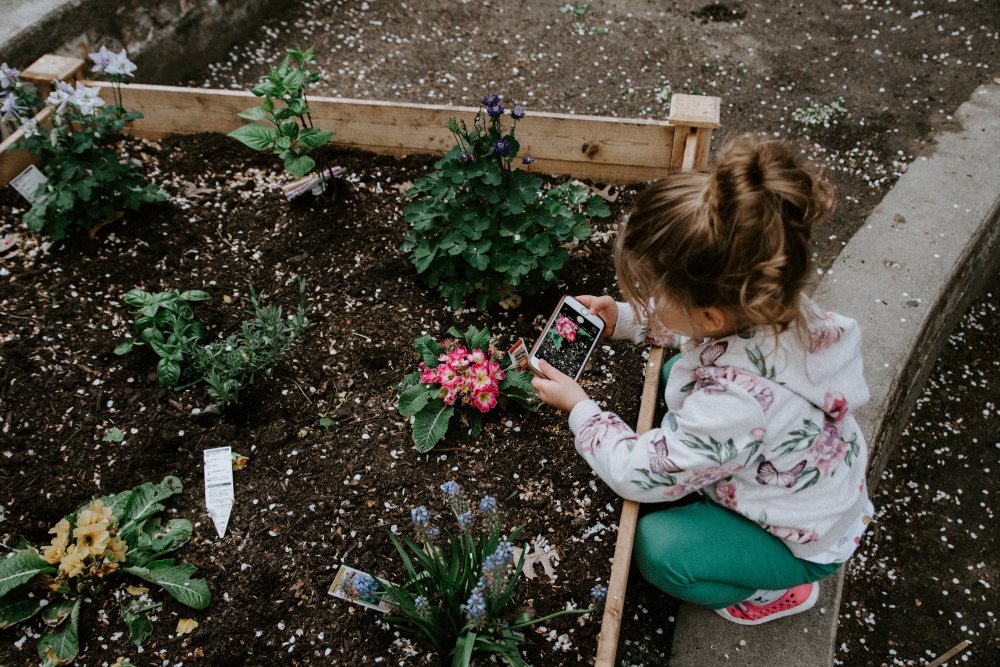
Tips from Kateri, Greenhouse Technician at Green Iglu:
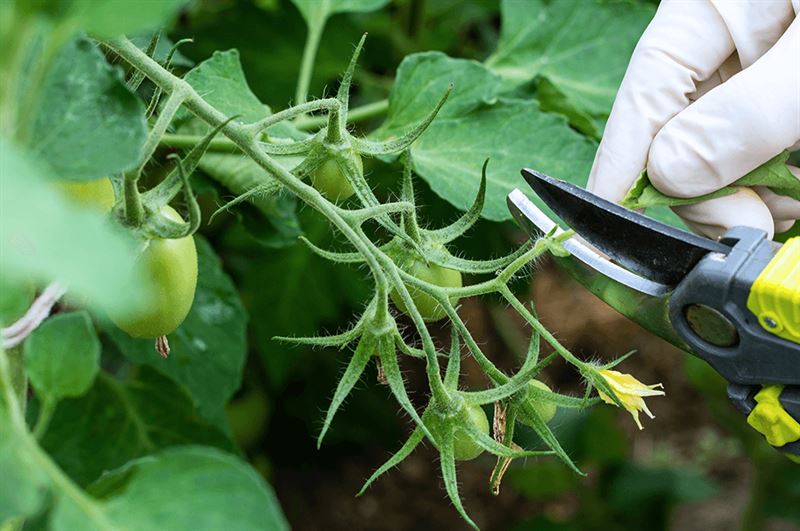
Tips from Raygan, Executive Director at Green Iglu:
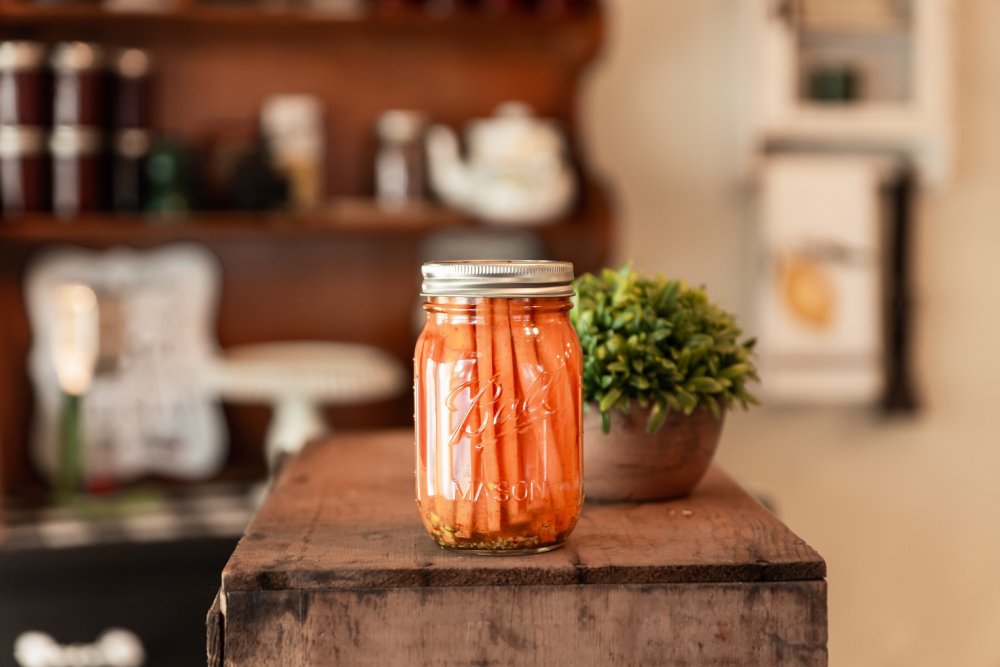
I was surprised by how unique all of the responses were. This goes to show how experimentative gardening is. So when things go wrong, take it as an opportunity to learn and add to your own library of fun gardening hacks! Looks like I’ve started my library before even having a garden…
I’m proud to be a part of a team that practices what they preach, and so generously shares their knowledge. Because when one person’s garden is flourishing, it benefits all of us.
The education we offer at Green Iglu is at the very heart of what we do and why we do it. By providing support and knowledge to communities, we can tackle the issues of food insecurity head-on. A greenhouse build simply would not be complete without the ones running it having all the resources needed to grow everything their heart desires!
This year, we had the opportunity to partner with an industry leader, Relay Education, to level up the way we share knowledge. With their Green Skills Academy, together we developed a full textbook complete with quizzes, workshops, and video lessons that covers each aspect of greenhouse gardening – growing basics, plant care, greenhouse planning and layout, hydroponics, garvesting, end of season practices, community engagement, and more.
We also have our Community Portal, where you can access a community forum, education lessons, video resources, and so much more. Our education material is designed to be informative, fun, and encourages you to add more locally grown food to your life. To inquire about all the education packages available, send an email to info@greeniglu.com.
Thanks for taking the time to learn with us today and for giving our team the opportunity to support you in your growing journey. Let us know if you make use of any of the tips above. We would love to hear from you about your experience!
Across Canada, over 28% of Indigenous households face food insecurity, which is far greater than the overall population average of 13%. In remote communities of the North, the rate is even higher.
Issues around food security are complex and are tied to a myriad of factors including socioeconomic inequity, government social policy, and lack of access to healthy, affordable food. However, within Indigenous communities there is also an added layer of a decline in access to traditional foods. This is linked heavily to the loss of knowledge, a direct consequence of centuries of systemic oppression and policies enacting cultural erasure.
Fishing livelihoods are among those traditions that continue to be threatened. Further pressure compounds on these traditional ways of knowing as climate change looms as an ever-present, existential threat.
Indigenous-led, sustainable aquaculture, operated in conjunction with wild fisheries, can be a potential solution to mitigate food insecurity, further food sovereignty and population health, and facilitate healthy ecosystems. Seafood has always been and continues to be a primary protein source for billions around the world, and this is especially true for coastal and near-lake communities in Canada.
Aquaculture currently supplies over half of the world’s seafood as it is a practical and necessary supplement to wild fisheries, the majority of which are fished at or over their capacities. In some instances, aquaculture can even be used as a tool to help surrounding ecosystems flourish - such as bivalve shellfish and kelp farming. These types of farms have substantial ecosystem services such as filtering the surrounding water by removing the excess nutrients and providing habitat to other creatures.

For disadvantaged communities, it can increase supply of healthy protein sources, reduce prices, and strengthen income and food access. Aquaculture operations within a community bolster economic activity by providing jobs and creating access to markets. It can also further strengthen food security by providing a stable source of nutrition, as it can mitigate against external environmental factors that impact wild fisheries negatively.

Aquaculture is not a new phenomenon – fish cultivation has been around for thousands of years throughout the world and in Canada, Indigenous communities in British Columbia have historically built clam gardens for clam production. Today, we can incorporate traditional ecological knowledge into modern aquaculture practices to ensure sustainable food security. In some areas, aquaculture can also be used for fisheries enhancement to help rehabilitate or maintain fish stocks to ensure that traditional wild fishing practices can continue to live on. By operating aquaculture facilities with community-oriented leadership it can also bring a sense of ownership and sovereignty over food production to local people, something that is currently lacking in many communities.

Presently, there is already much Indigenous involvement in aquaculture operations in Canada. In Ontario, over 75% of rainbow trout net-pen operations are grown in partnership with Indigenous communities. There is potential for this trend to grow. Even in areas where there is little access to water, farms can thrive using recirculating aquaculture technology. This innovative form of land-based fish farming recycles 99% of the water in the system, and is on the forefront of sustainable aquaculture as it has minimal impact on its surrounding environment compared to other methods of farming.

As such, sustainable aquaculture has the potential to alleviate food insecurity in communities across the country, along with the factors that are tied to it. It drives community well-being, self-sufficiency, and resiliency. It has the capability to drive economic growth while ensuring that the benefits of this growth are realized within the community itself. And when done right, it can ensure the continued health of the surrounding ecosystem and help traditional ecological knowledge thrive. As more and more aquaculture projects crop up, there is hope to see it become a cornerstone to ensuring food security across the nation.
About the Author:
Judy Song is a passionate advocate for sustainability in the seafood industry. As part of Ocean Wise's Fisheries and Seafood team, she helps businesses across the seafood supply chain realize their sustainability goals. With an HBA from Ivey Business School, she worked on various pro bono projects aiding Indigenous and non-profit organizations in sustainability and conservation. Post-graduation, Judy headed product launches and promotional campaigns in the telecommunications sector, bridging customer needs and product growth opportunities. This led Judy to build strong marketing skillsets centred around data-based decision-making and personalized engagement. However, Judy's true calling was sustainable development! Judy now focuses on community-based aquaculture and environmental education projects. She is dedicated to bringing positive change across the seafood sector, ensuring healthy and flourishing oceans for the next generations.
Do you have a story on environment and food security? We would love to hear from you. Email us at info@greeniglu.com.
Get to know Korina Boettcher, Project Manager at Green Iglu! Here are a few words from Korina herself.
As a Project Manager for Green Iglu, I have a strong background in logistics, purchasing and managing. I have only dabbled in growing my own vegetables and to be honest I am a lazy gardener. I have learned the hard way that I do have to thin the carrots if I actually want to grow any. Like most people I hate weeding and I am too impatient to start seeds.
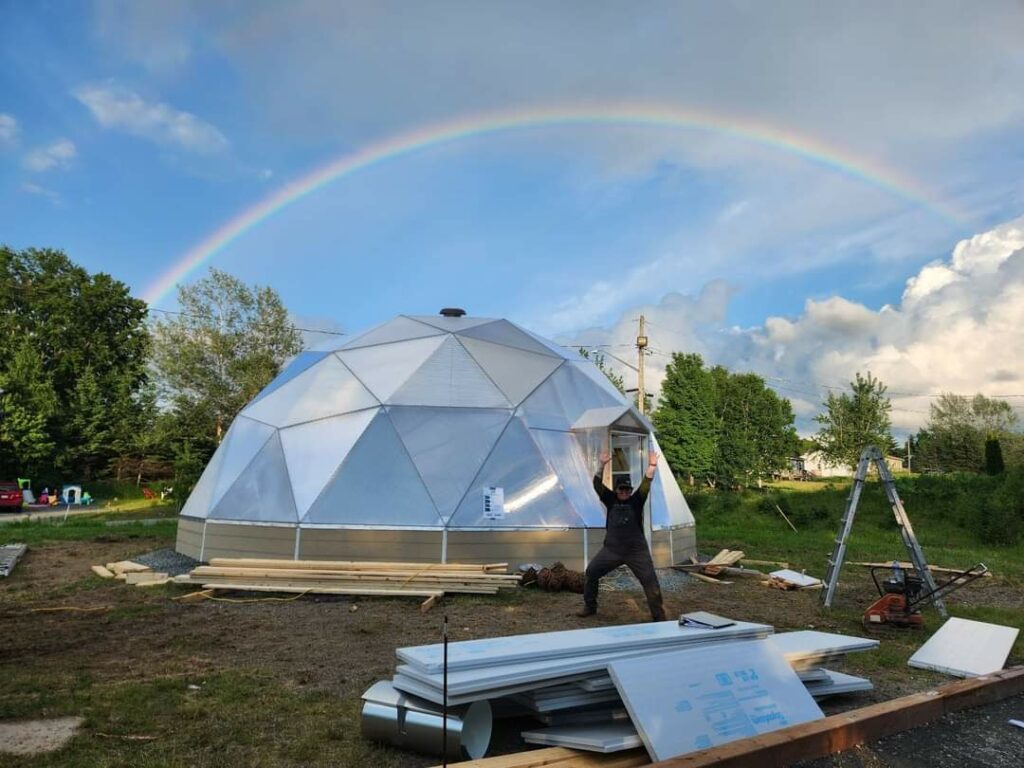
What I do love about gardening is what is called “Chaos Gardening” taking a handful of seeds and throwing them in the dirt. No creating rows, no “starting seeds”, no method, just madness. With this method I get a beautiful mixture of vegetables and native wildflowers.
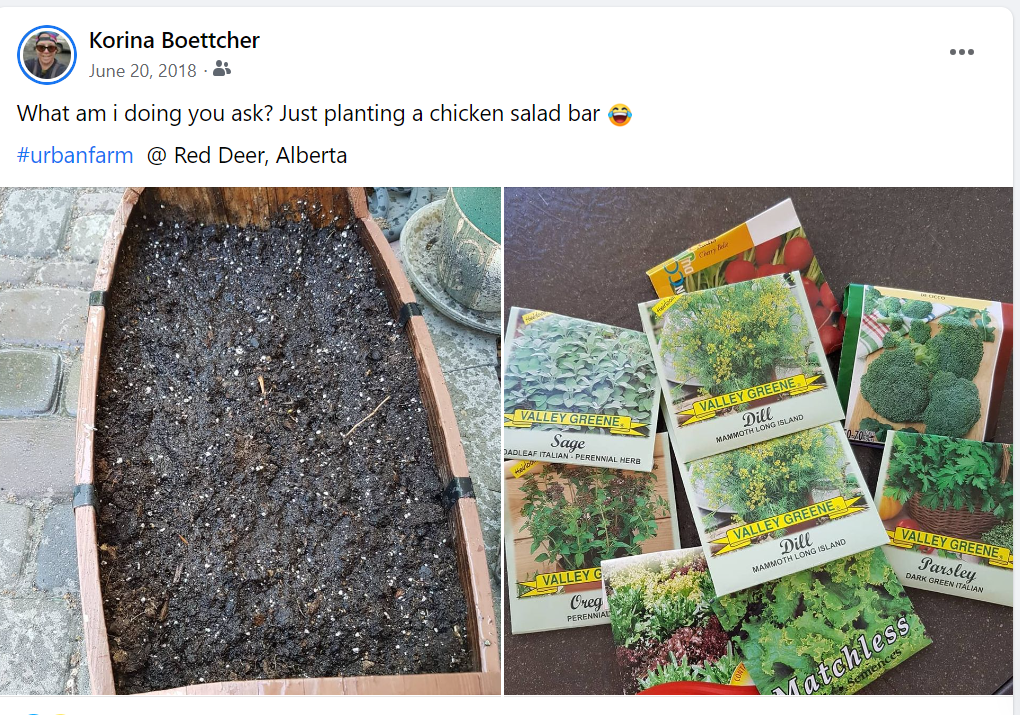
The last vegetable garden I grew wasn’t for my family, it was for my chickens! I created a raised bed in my front yard, strictly with stuff to feed my chickens when I didn’t have enough kitchen scraps. A great way to keep the deer and bunnies out was to put a wooden stake in each corner, then tie flagging tape to the tops. The tape flaps in the wind and creates movement that keeps the wild animals out.
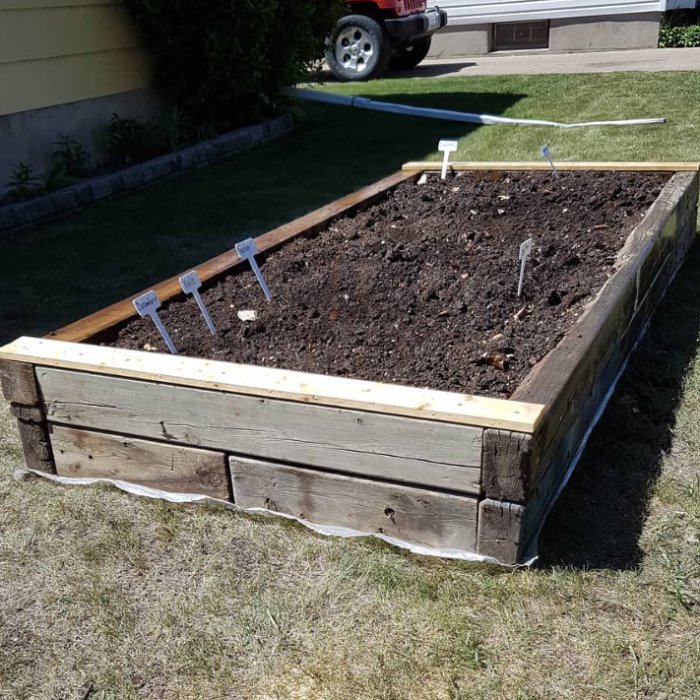

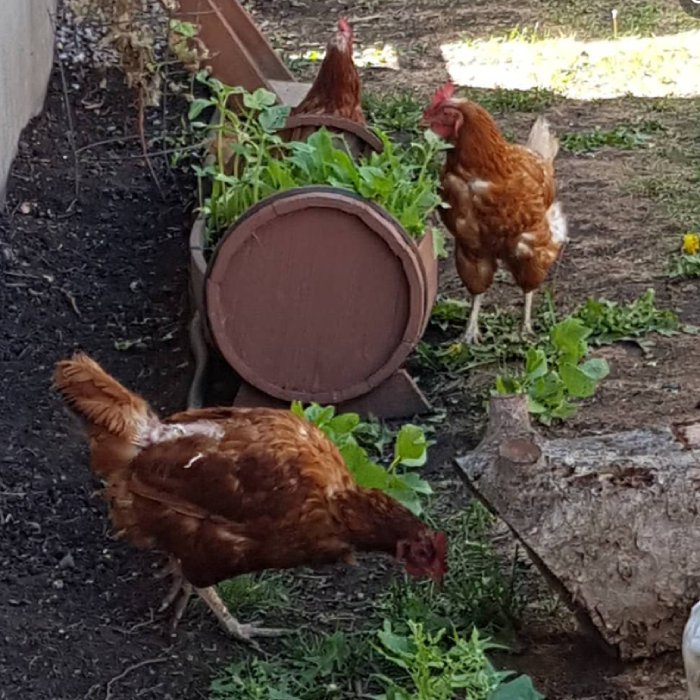
In 2023, I would like to experiment with a kitchen herb garden in the winter, as well as plant an outdoor garden of Asparagus, which is my most favourite vegetable. In my plot of dirt I would also like to plant native wildflowers to Alberta such as wild bergamot, blanket flowers and wild columbine promising to keep to my “chaos” roots and there will be no organization.
If you have the privilege of meeting Korina on-site, be sure to have some fun with chaos gardening together! We look forward to hearing all about it.
I had the opportunity to sit down and pick the brain of Eric Lang, the President and Co-Founder of ZipGrow Inc, with the help of Katherine McDonald, the Business Manager, and Mama, the office cat. ZipGrow is a global manufacturer of hydroponic systems. The Cornwall, Ontario-based company is an influential partner of Green Iglu due to our shared values and vision. With multiple collaborations on community projects, we have had the opportunity to include ZipGrow hydroponics infrastructure. Due to this valued partnership it was about time I learned all about ZipGrow’s journey. Keep reading to learn how ZipGrow has evolved over the years, their thoughts on the future of hydroponics and how hydroponics is transforming food systems globally.
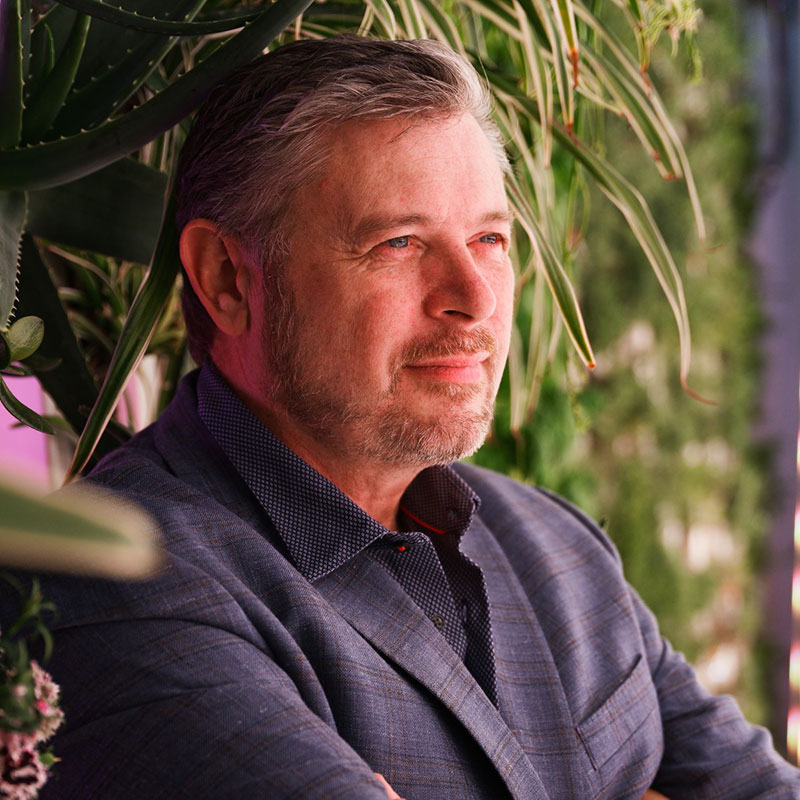
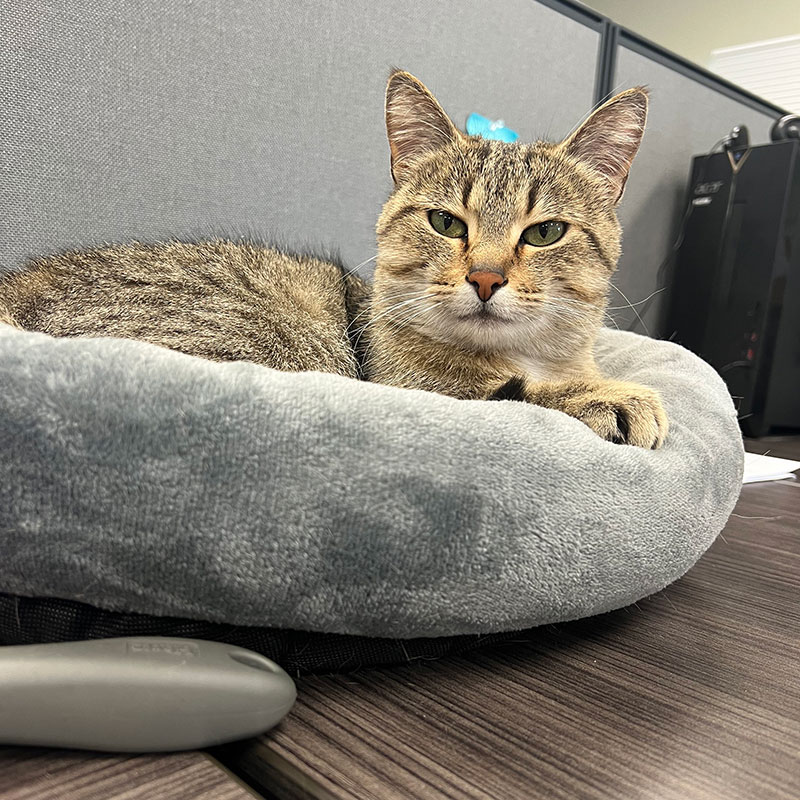

Hydroponics and the Future of Farming
Hydroponics is a form of agricultural technology that grows plants without using soil. Instead, plants are grown in nutrient-rich water solutions. The plants are able to get all the nutrients they need from the water solution in order to grow and thrive. With the right hydroponics setup, you can grow almost anything your heart desires. This includes leafy greens, herbs, strawberries, tomatoes, cucumbers, and even flowers! Cool stuff, right? It gets even better. Hydroponics and vertical farming can grow crops up to 50% faster in order to support year-round production of fresh food while using only a fraction of the space and water, that traditional agriculture would use.
Introducing ZipGrow Inc.
Now that you know what hydroponics is, let me introduce you to ZipGrow Inc, one of the leaders in the Controlled Environment Agriculture (CEA) industry. ZipGrow has been localizing food systems for communities and people all across North America by empowering people to produce fresh food through hydroponics. Zipgrow envisions a future where high quality, environmentally, and economically sustainable food is accessible to everyone. This vision has inspired countless home growers, businesses and educators to turn to ZipGrow for hydroponics infrastructure.
The Evolution of ZipGrow Inc.
Eric Lang, the President and Co-founder of ZipGrow Inc. came from a background in dairy and cash crop farming. Eventually, a close friend convinced Eric to invest in a small-scale vertical farm. Eric was skeptical about the investment, for he thought of it as a gimmick or scam. This made Eric dive deeper into the investment details, only to have an epiphany — Eric realized the potential of vertical farming and how it is going to be part of the future of food systems and of human consumption.
“Continued lack of arable land and water in the world make Hydroponics a solid part of the food accessibility solution for the next generation.” - Eric Lang
Eric’s passion for hydroponics started that day, and life casually directed him toward ZipGrow. ZipGrow Inc began as a reseller for the ZipGrow Tower, a patented innovation of Nate Storey as part of his thesis at the University of Wyoming. Eric and his team initially focused solely on the Canadian market, but their success in Canada surpassed all the other resellers around the world. As a result, Eric was asked to take over the worldwide manufacturing and selling of the patents. It’s been upward since then. ZipGrow has expanded to provide systems tailored for home hobby systems, educational systems, and cannabis-related growing systems. Eric expects the CEA industry to surge globally over the next five to ten years. He believes that ZipGrow will become a household name in the industry worldwide.
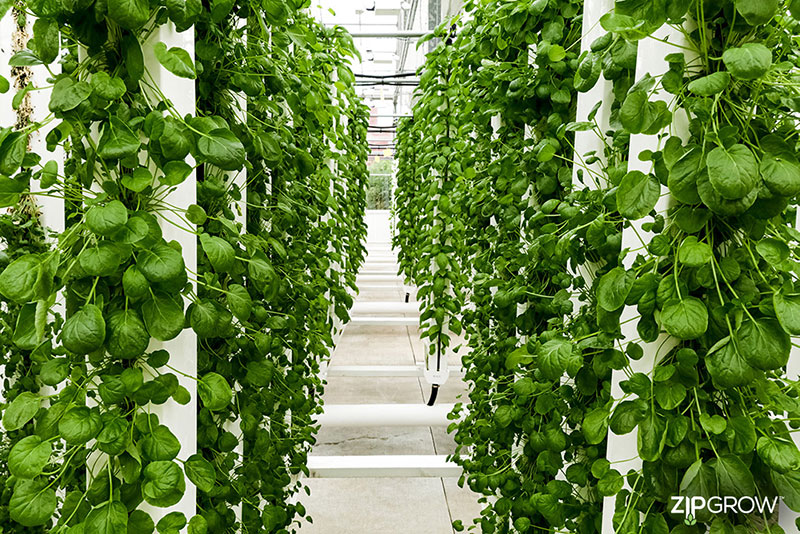
Growing and Beyond - Empowering through Education and Training
ZipGrow’s value proposition is based on two key pillars — education and support. The company has been educating people through their many online resources about fresh food production through hydroponics.
Some of these resources include:
Eric explained how individuals, educators, and trainees make use of these resources differently. Individual growers use ZipGrow’s educational content as a starting point to understand the fundamentals of hydroponics, as well as the benefits and challenges associated with this industry. Educators and school boards, on the other hand, partner with ZipGrow to develop specific programs to teach STEM (Science, Technology, Engineering and Mathematics) using ZipGrow systems and methods. Lastly, ZipGrow trainees can experience a “day or week in the life” of a hydroponic farmer, where they work alongside ZipGrow trainers and research technicians to get a very hands-on, and highly immersive experience.
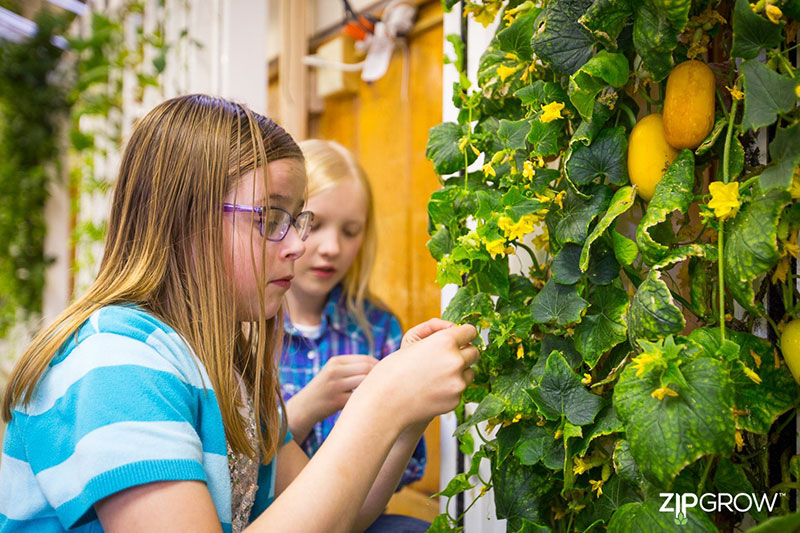
Encouraging Youth for a Food-Secure Future
ZipGrow realizes that the youth of today will have a big role in a food-secure tomorrow. That is why the ZipGrow team has partnered with schools to incorporate hydroponic systems and methods. ZipGrow has supplied hydroponic equipment to schools so students can grow their own food and re-establish the relationship between food consumers and food producers.
Young students also easily adapt to new technology and can inspire their parents and the older generation to reconsider where their food comes from in order to create more efficient and sustainable food systems. To all the students who want to be a source of change and increase food security in their communities, Eric suggests that local schools should include a form of indoor hydroponics systems. Students can get hands-on experience growing food, start a growing club or a youth agricultural club and present their growing ideas along with the benefits of growing locally. ZipGrow encourages local school boards to be proactive in implementing these educational tools.
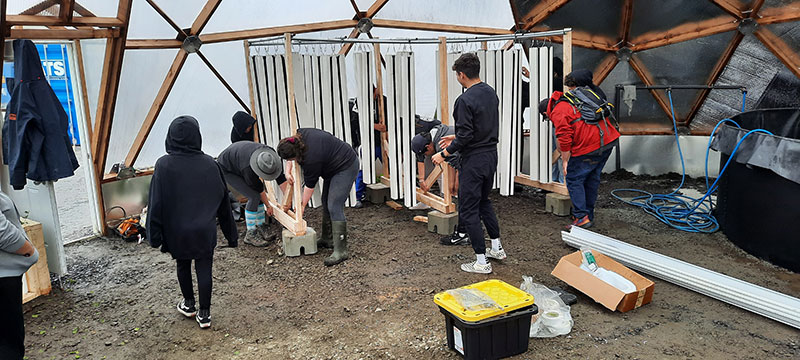
Zipgrow has shown the potential of hydroponics to completely revolutionize the agricultural industry. As a partner, Green Iglu cheers on ZipGrow’s remarkable work. Collectively, we can ensure food security and food sovereignty for generations to come using the right growing technology, education and training. To end this blog, I’ll let these wise words inspire you:
"As leaders in the Ag-Tech industry, we have the power to nurture the next generation's passion for hydroponics, paving the way for a localized food revolution that nourishes communities and fosters a sustainable future.” - Eric Lang
That is all folks, be sure to check out ZipGrow to learn more about what they offer. If you have any ZipGrow related inquiries, you can direct them to hello@zipgrow.com. Lastly, I am alway here to answer any Green Iglu related questions you might have, or if you wish to share your thoughts on this blog — your feedback is always appreciated! You can reach me at zoha@greeniglu.com.
I’m Kohila Vinothkumar, and I was born in an urban village in India, my parents Mrs. Mahalakshmi & Late Mookaiya. I am very proud to say that I am a farmer's daughter. My upbringing instilled in me a deep appreciation for agriculture and the importance of traditional foods for survival.
I recently immigrated to Canada, and since June 2022, I have faced various dietary and cultural hurdles. Coming from rural India, I have quite distinct weather and cultural influences. However, I am capable of producing my own food because of my parents’ and ancestors’ desire to learn agriculture.
We do not eat food primarily for flavour; rather, it is for our health and well-being. Because of my culture and traditional food for survival, I can now survive wherever I am.
On the farm, we harvest 12 months of the year. We mostly harvest major food crops such as paddy, coarse cereals, minor millets, pulses, oilseeds, and all kinds of crops like banana, eggplant, okra, beans, and chilli according to the season. As my part-time job while studying, I would go to the garden every day before school to help with the garden. My father used to invite me daily as a sharer in his garden.
My family's major source of income is agriculture, and my father worked full-time on his farm to support our family and provide for the community. We revere the land as God.
My father gave me a superior education and made me the first graduate in my family because of his dedication to farming and hard work. Although I work in the finance division, my karma serves as a constant reminder to me to work in harmony with the natural world.
Working with Green Iglu gives me more satisfaction because my organization's motto is to serve the communities who are truly seeking food security and wants to encourage food sovereignty. Working at Green Iglu as the Financial Assistant, I have learned a lot about traditional foods, food sovereignty, weather-based dietary choices, and the nutritional benefits of those foods. I love being a part of this organization. Before working here, I worked as an Operations Executive for two organizations in India, TIME Institute and Flipkart.
My father used to tell me that every human being is born to find numerous occupations to earn money, and the only way to earn food is through agriculture. Agriculture is the backbone of every human being, and it is essential to work in harmony with nature to achieve sustainable growth and development.
I look forward to contributing to the growth and success of Green Iglu and sharing my experience with all of you!
Below you will find photos of my farm back home.
Hello again! It’s Jennica here.
Last fall, we launched a research and development project, thanks to our new partners Planta Greenhouses! I want to share the progress and some of the things we have learned along the way.
It has been quite interesting trying to grow things in the deepest part of winter here in our zone 3 climate. The Planta Sungrow has been an excellent structure and has held up through the extreme winter conditions we have experienced in Alberta.
Seeding in November
As you may remember, we seeded several varieties of greens, broccoli, cauliflower, carrots, beets and garlic on November 10th. We installed supplemental lighting and used a small space heater to keep temps above freezing. The grow boxes were also covered with more of the reflective bubble wrap. This served us well, as it helped keep more heat around the seedlings and was able to maximize the light we had. 7 days later, we had seedling emergence which was very exciting! We were able to begin harvesting just in time for Christmas!
Harvesting
The harvesting is probably the most fun and rewarding part of winter sowing. We started harvesting arugula and spinach on Dec 21 and have been able to continue since then. We harvested about 4kg of greens, beets, radish and broccoli between December and March. Growing was notably slower during the very cold winter months, but we were steadily seeing growth with the added lights and warmer temperatures created in the greenhouse.
Maximizing Space
As time passed and our winter began to (slowly) turn into spring, we rearranged the interior a little bit to make more room for growing more plants. We used wire closet shelving and installed a nice wide length of this along the main brace at hip height in the greenhouse. This shelf is 20 inches wide and accommodates a standard-size grow tray perfectly. We also installed a 12-inch wide shelf above this to really make use of the space and sunlight that streams in. The grow bins were also rearranged and placed in a single row along the bottom edges of the greenhouse walls. The bottom bins were filled with water all winter long to add thermal mass to the north wall, but I have since removed most of the water in preparation for refilling with soil to plant into.
The stock tank remains in place and has been great for thermal mass and water access all winter. During winter we refilled it 2 or 3 times by adding about 20 gallons of hot water each time. Since temperatures have been rising and sunlight has become stronger the water needs of the plants have increased and as such, I have had to top up the tank 3 times this month!
Plant Sale
In mid-February, we received our order of herbs and plants for our plant sale fundraiser. Most of them came home with me after we had a cold snap and the heater decided to quit that night. We did have some frost damage and lost several tender herbs, but many have rebounded and are coming along fine again. The herb and salad planters along with the sweet peppers are all hanging out in the greenhouse now and seem to be quite happy there. Growth is happening and things are looking good! My shelving units are maxing out and we still have lots of plants to pot into bigger containers. I hope we will be able to sell off several planters in the coming days!
Greenhouse Temperatures
The smart monitors we have been using to track temperature and humidity have been working great all winter. They give us a warning when it is either too cold or too warm in there and we can add the recorded data to our tracking sheets for accurate data. Pretty cool!
The reflective bubble wrap was excellent at insulating and being easily adjustable. I did remove a strip from the north wall when we got our seedling shipment so they wouldn’t burn with the intensified light. I anticipate removing the end wall insulation as the season progresses.
We have added 3 windows in all at this time. Without them, the plants would be overheating and fried even though it is still -10 frequently outside. Our daytime temps often reach +25 inside and without the windows and automatic openers, the temps would double that. I will add another window or 2 as things continue to warm and we prepare for summer planting.
What an adventure it has been, growing through the winter. It has been an honor to be part of this team and push the limits on growing in Zone 3. I am excited to see what we can grow next winter!
This story is written through the eyes (hands) of an immigrant to Canada. My name is Daiana and I am from Ukraine.
I grew up in a wonderful city near Kyiv. As a child, I was taught how to respect the lands that feed us.
Each autumn we would use different techniques to maintain the health of the land. These are the routine activities in Ukraine:
While conducting any work on the land, we sing songs, give thanks for the harvest, and ask for a good harvest the following year. As my grandmother once said, “Black earth flows in our blood,” and I have no right to forget it.
Now that I live in Canada, I enjoy being in an environment related to cultivation, land, food, and support. I am very grateful to Green Iglu for the opportunity to work in such an environment. There are many achievements ahead!
Swipe through to see photos of Daiana’s garden and farm in the village of Obmachiv, Ukraine:
